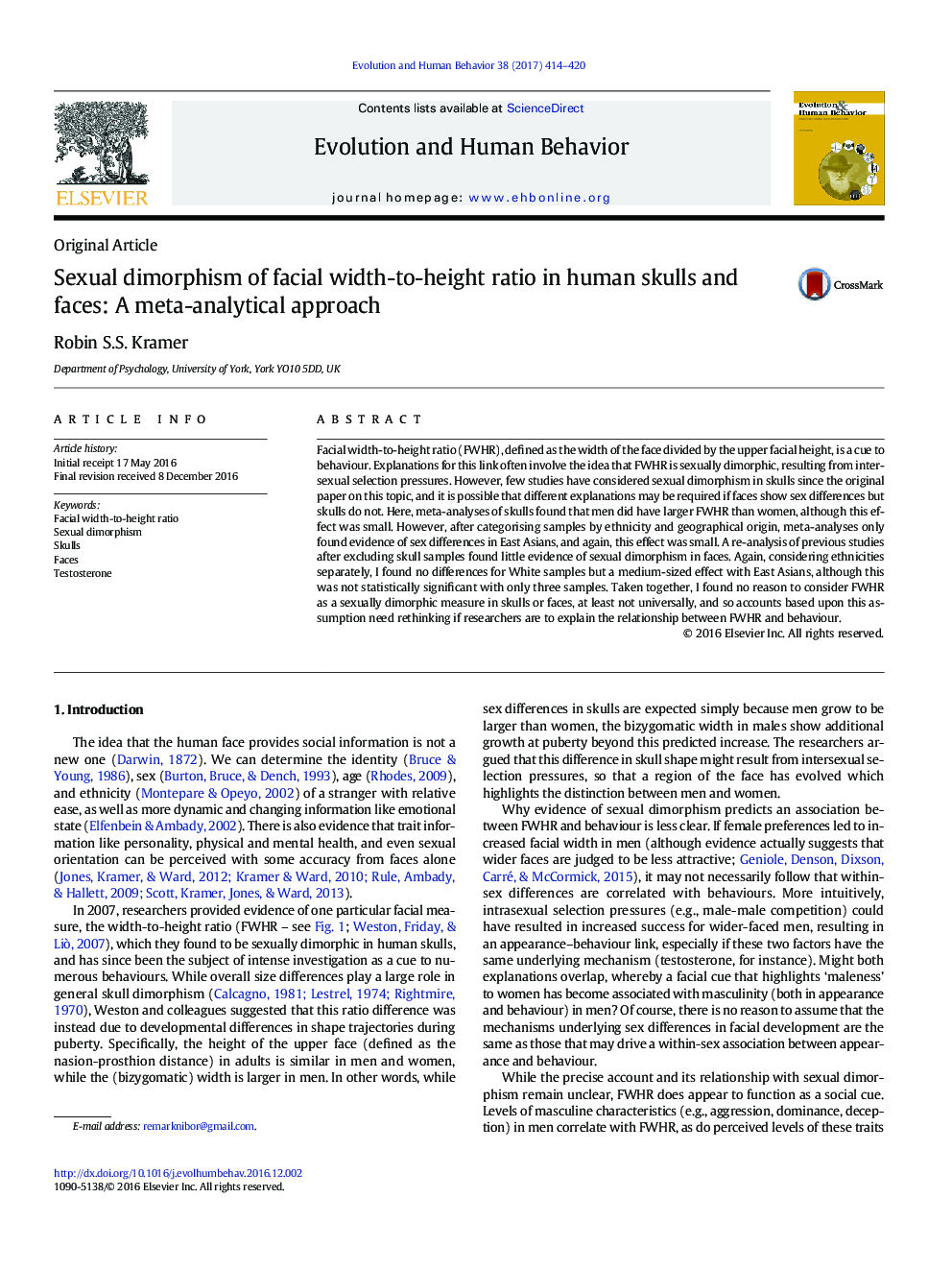| Article ID | Journal | Published Year | Pages | File Type |
|---|---|---|---|---|
| 5044783 | Evolution and Human Behavior | 2017 | 7 Pages |
Facial width-to-height ratio (FWHR), defined as the width of the face divided by the upper facial height, is a cue to behaviour. Explanations for this link often involve the idea that FWHR is sexually dimorphic, resulting from intersexual selection pressures. However, few studies have considered sexual dimorphism in skulls since the original paper on this topic, and it is possible that different explanations may be required if faces show sex differences but skulls do not. Here, meta-analyses of skulls found that men did have larger FWHR than women, although this effect was small. However, after categorising samples by ethnicity and geographical origin, meta-analyses only found evidence of sex differences in East Asians, and again, this effect was small. A re-analysis of previous studies after excluding skull samples found little evidence of sexual dimorphism in faces. Again, considering ethnicities separately, I found no differences for White samples but a medium-sized effect with East Asians, although this was not statistically significant with only three samples. Taken together, I found no reason to consider FWHR as a sexually dimorphic measure in skulls or faces, at least not universally, and so accounts based upon this assumption need rethinking if researchers are to explain the relationship between FWHR and behaviour.
